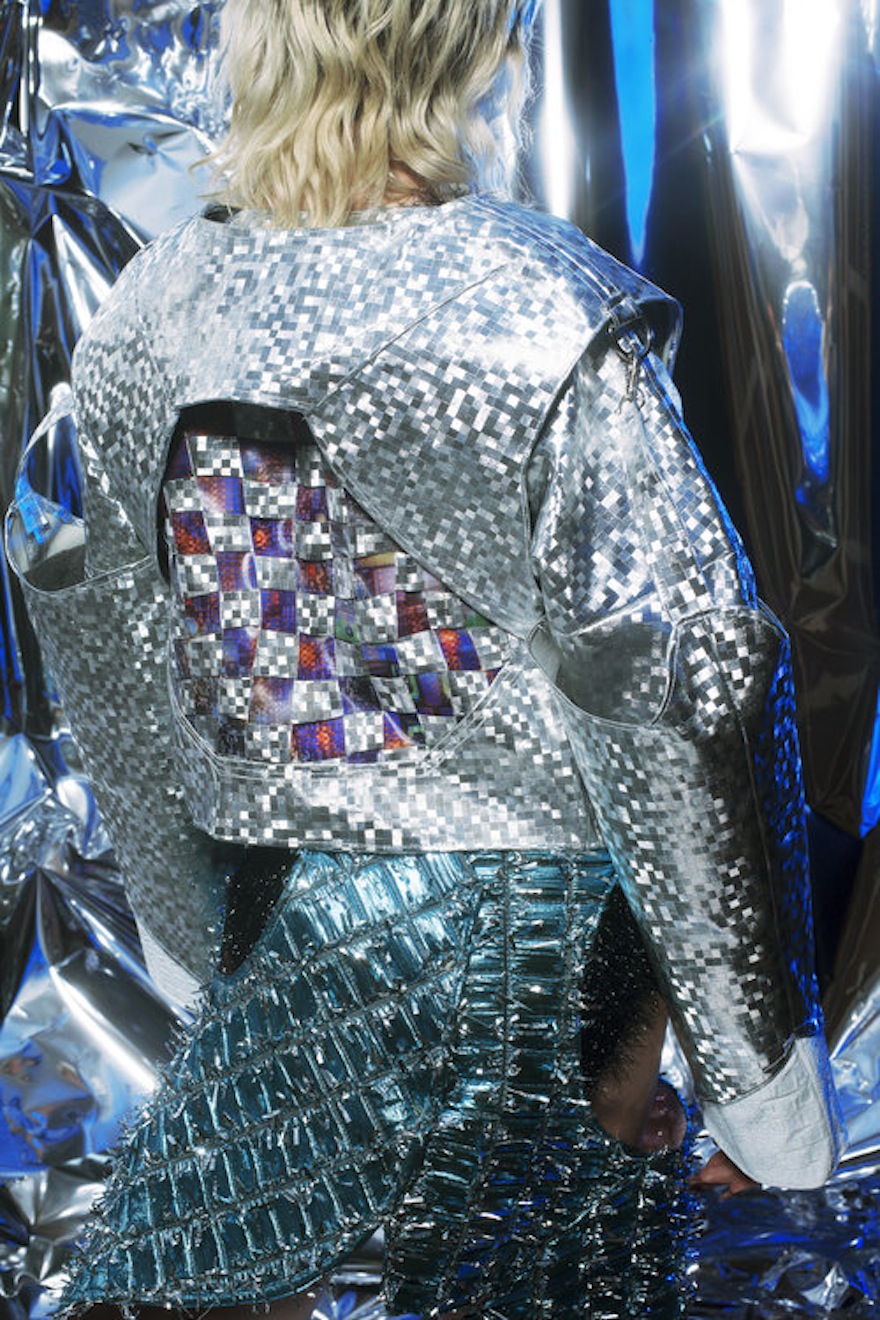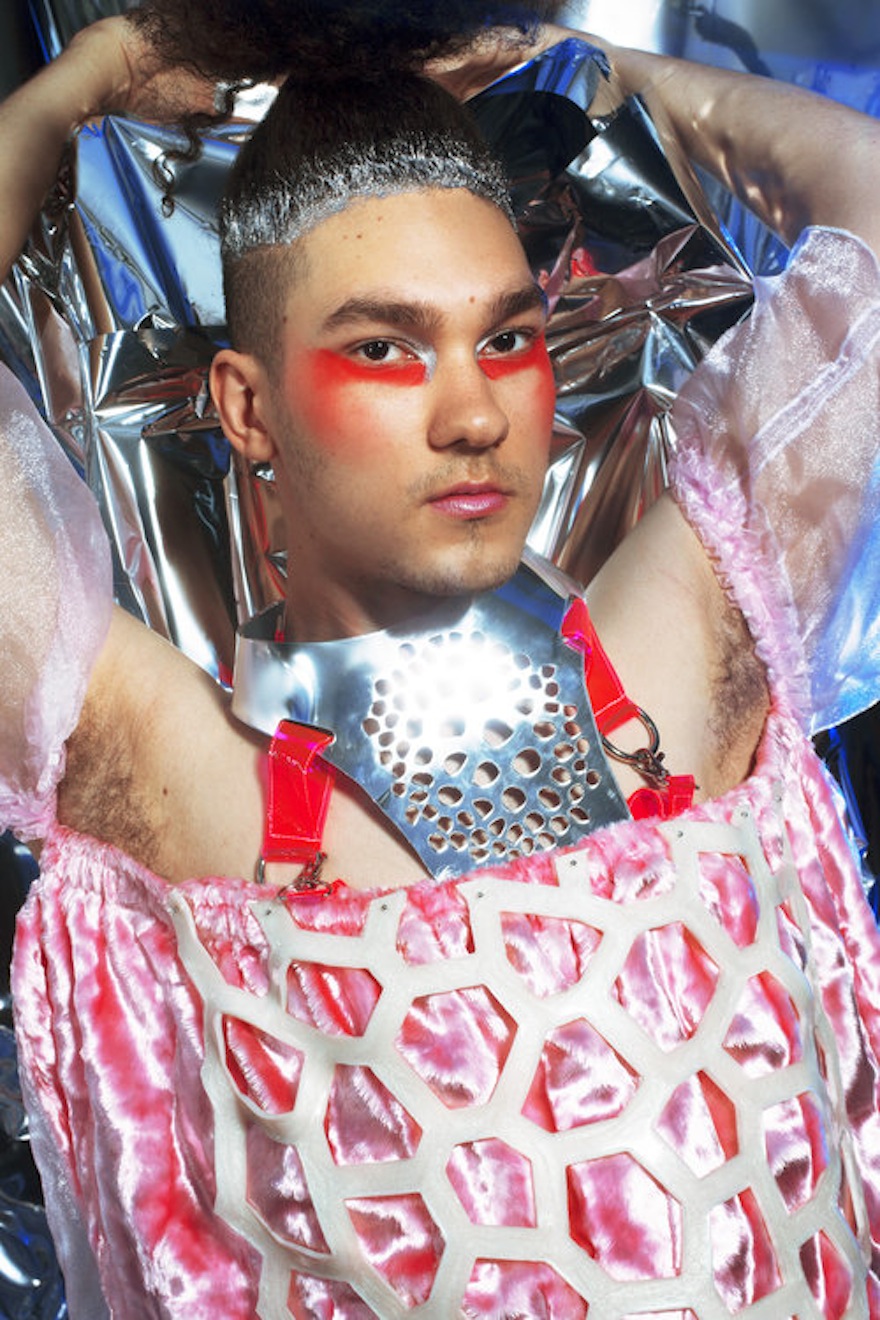
As technology continues to rapidly develop and the concept of wearable tech becomes increasingly mainstream, two students from the Rhode Island School of Design have posed an interesting question: Why is it that only one aesthetic continues to dominate the tech industry? Inspired to subvert this norm, Zoe Schlacter and Amelia Zhang created their own range of wearables, inciting a conversation around what this tech should ultimately look like.
Aiming to diversify the field's aesthetic possibilities, their collection embraces traditional crafts like handweaving and embroidery. Featuring diverse pieces - including ones that incorporate custom textile made from laser-cut molds that cast pearlescent silicone onto digitally embroidered organza, and a large, 3D printed pendant of Mark Zuckerberg’s face - their range is a visually stunning break from the more traditional designs.
Launched under the brand name TELEXST and billed as “wearables for the cyborgian other”, the collection introduces a series of less homogenous options into the field. “Most of the tech we interact with is white and silver, sleek, minimalist, masculine in aesthetics,” Schlacter explained in an interview with Metropolis Magazine. “For the most part, our tech lacks decorative, feminine aesthetics. We believe this aesthetic dominance can be seen in tandem with the lack of women and marginalized identities in tech fields.”



According to Schlacter and Zhang, TELEXST champions a philosophy of ‘post-digital craft’, seeking an integrative rather than competitive usage of handcraft and digital fabrication. For them, these practices can work in tandem, as they proved with their Machine Learning Dress. Though its print – derived from 20,000 Instagram images of various forms of nail art – was sourced and made digitally, the item was completed using more traditional clothing construction methods like sewing.
Over the years, designer’s experimentations in the wearable tech sector have uncovered many innovative uses but visually embrace an air of minimalism, though a lot of wearable tech incorporates a minimalist style statement to better blend into its users’ everyday wardrobe. Gadgets like the LifeQ, the ELF, and the Jolt Sensor - all of which respond to different bodily functions - are designed to blend into the wearer’s own attire.
Dutch designer Pauline Van Dongen’s forays into the field have revealed particularly novel and exciting functions – from a vest that lets wearers know when they’re slouching, to a long jump suit made from an innovative condom material that utilises geometric laser-cut panels to improve its users performance – but visually, they’re all the same: black or white, excessively minimal and masculine.
Ultimately, whether wearable technology embraces a more imaginative and diverse aesthetic will be up to the consumer. For Schlacter and Zhang, TELEXT’s inclusion in this market is simply prioritising a different demographic – in terms of both aesthetics and narrative.










